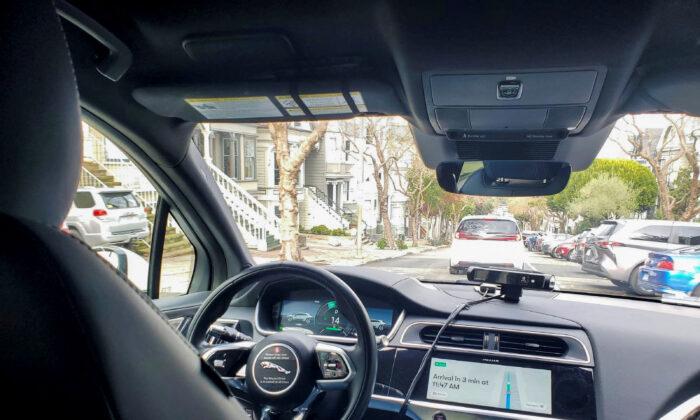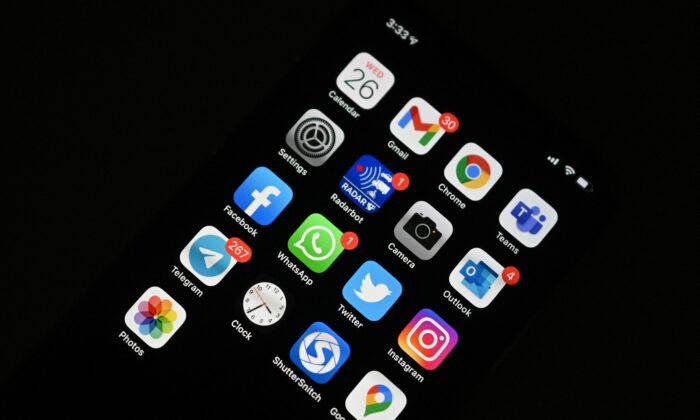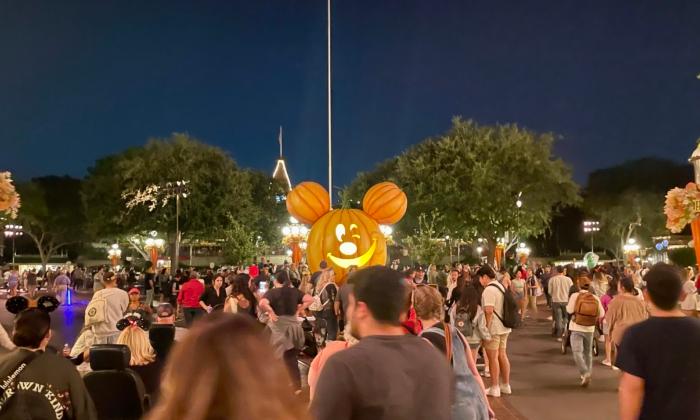Before a fateful January day in 2011, high school student Kyler Erickson decided that he wanted to be remembered for his excellence in basketball.
However, after surviving the Millard South High School shooting in Omaha, Nebraska, that occurred just mere feet from his room, Erickson spent years battling PTSD, suicidal thoughts, and depression.
He eventually utilized his experience with trauma to help “as many people as possible,” giving inspirational talks to hundreds of thousands of children and adults in schools across the country, including a school safety conference last week in Garden Grove, California.
During the 13th annual SafeSchools Conference, July 13–15 in Garden Grove, a program through the California Department of Education aimed at providing training and resources to schools and administrators to improve overall student safety and well-being, Erickson shared his story of coming to terms with his trauma, as well as how adults can guide children struggling with similar hurdles to prevent shootings like Millard from happening.

Just before the shooting, Erickson had sprained his ankle while training on his high school varsity basketball team during his senior year. Making a quick trip to the nurse for some ice, Erickson had no idea of the devastation he would soon hear happening mere feet away in the room right next to his.
Walking into the school’s administration building–which held the school nurse’s office as well as administration, including the principal and assistant-principal offices–Erickson walked in right next to the school shooter, who followed in on Erickson’s right.
The shooter, 17-year-old Robert Butler Jr., had been suspended mere hours earlier by the assistant principal for driving on the school football field in his truck. Having been suffering from drug abuse and potential alcohol abuse, Butler had returned that same day.
Right in the next room of the same building, a few feet away from Erickson, Robert pulled out his gun and shot and killed the school’s assistant principal, Dr. Vicki Kaspar.
Then, walking a few feet past Erickson’s door, Butler shot school Principal Curtis Case three times, but Case was able to survive the brutal attack.
Erickson, who had been icing his ankle alongside other students at the time, was physically unharmed.
According to a CBS crime report detailing the shooting, Butler also fired at a custodian and missed, while bullet fragments hit a school nurse who was treated at the scene.
According to the report, an unarmed security officer was sitting at a desk outside the school’s main offices and saw Butler walking away. Butler pointed the gun at the officer, who took cover and wasn’t shot.
The report also states that a school resource officer, who heard the gunfire called police, reportedly gave law enforcement Butler’s name and described his car.
Shortly after, authorities received a report of a suspicious vehicle about a mile from the school. Officers approached the car and found Butler inside, dead from a self-inflicted gunshot wound.
Authorities also said they believe Butler used a handgun owned by his father, according to CBS. Likely his father’s service weapon, who was a police officer—the gun was a .40-caliber semiautomatic pistol, able to fire up to 15 rounds. Butler fired seven rounds that day.
“The things that stick with me so much to this day are the sounds of literal screaming bloody murder,” Erickson said.
After the shooting and mourning, Erickson had one question that he says stood out in his mind, one he claims he became “obsessed” with: whether he would have been proud of who he was if he hadn’t made it out of school that day.
According to Erickson, his answer at the time was “no.”
“It was the most helpless feeling in my stomach, just this pit that [the shooting] could have been the end for me,” Erickson said.
Erickson said this was the moment he decided to dedicate his life to trying to make the world a better place, working to reduce school shootings and suicides by sharing his message and road to recovery with schools across the nation.
Sharing his story of recovery following the shooting, Erickson described his near suicide one day sitting by a lake during his college years.
What stopped him, he said, was how “unfair” it would have been to put his loved ones through the grief and loss from his suicide, a consideration Erickson says saved his life. This thought, according to Erickson, was what led him to advocate for better home lives and father figures for young people at risk of conducting similar attacks.
Additional steps Erickson advocates include trauma-informed therapy, as well as eye movement desensitization and reprocessing therapy (EMDR), which encourages the patient to briefly focus on the trauma memory while simultaneously experiencing eye movements. This therapy is said to be associated with a reduction in the vividness and emotion associated with a trauma response, according to Erickson.
After practicing EMDR for four months, Erickson reported feeling fewer strong emotions behind his traumatic memories, adding that the therapy was “very effective” for him and other survivors, he said.
Erickson also noted that sharing his story has helped him move past his trauma, such as with his college basketball coach. After entering his coach’s office and describing his struggle functioning in college and even certain noises–such as girls screaming at his dorm, or fireworks, noises reminiscent from the shooting–his coach gave him some “unforgettable” advice:
“None of us are defined by what happens to us. We are defined by what we do next, by how we respond,” Erickson recalled hearing.
Sharing his story with his coach, Erickson said, was a pivotal moment in deciphering how to prevent school shootings moving forward: a recommendation he has for all people guiding school-aged children.
It was at that point that Erickson made it his “mission” to travel across the country to share what he learned from his experience combating PTSD, as well as how to prevent his school’s tragedy from occurring elsewhere.

In addition to watching for warning signs such as “broken families, quietness, outcast behavior, and an interest in guns,” Erickson also recommends helping children discover purpose through access to positive role models and activities they truly enjoy.
Finding what “excites” children, and gives them a reason to “get out of bed in the morning,” is essential, Erickson says.
“If you know anybody that was an alcoholic or drug abuser, [therapists] don’t try to talk them out of the drugs or the alcohol,” Erickson said. “Instead, they find something better for you. And that’s what we want to do for these kids … build a life for them that they can chase.”
Another factor Erickson says to mitigate in children is loneliness, a trait he discovered to likely be experienced in the Columbine school shooters in their journal articles posted online.
Reading from an excerpt from one of the shooters’ diaries, Erickson highlighted a passage in which the shooter expressed a desire to inflict harm as a means to be “remembered,” due to feelings of loneliness and isolation.
One way to combat this, Erickson says, is to provide children with positive role models they can look up to, both inside and outside the classroom.
Both of the Columbine shooters had fathers who were reportedly absent in their lives, Erickson noted, something he believes played a role in their lack of a positive male role model to aspire after.
Similar father absences were noted in school shooters involved in the 2012 shooting at Sandy Hook Elementary School in Newtown, Conn., and this year’s Robb Elementary School shooting in Uvalde, Tex., Erickson said. He cited a New York Times article stating that 26 out of the last 29 school shooters all had absent fathers.
In all, Erickson stressed the importance of encouraging young people as much as possible in light of increased isolation following the COVID-19 pandemic, an event that saw an increase in overall suicides across the nation as well.
One of the conference directors, Dr. David Long, expressed his agreement with Erickson to The Epoch Times following Erickson’s speech.
“Our hope is that parents become deeply involved with their children by being vigilant, talking to them often, and giving them hugs … really showering them with love,” Long told The Epoch Times.

Long helped launch the annual SafeSchools conference in 2007 after his time as then-California Governor Arnold Schwarzenegger’s Secretary of Education, using his experience and platform to create a space for law enforcement and education personnel to come together to learn more about school safety.
The conference features a plethora of breakout sessions outlining the latest in school-related issues including gang violence, mental health, and more, as well as prominent keynote speakers, vendors dedicated to education technology and protection, and so much more.
According to Long, it is a chance to exchange valuable ideas and updates to make schools across the state safer for all students, inviting education leaders from all over the country to learn and participate.




